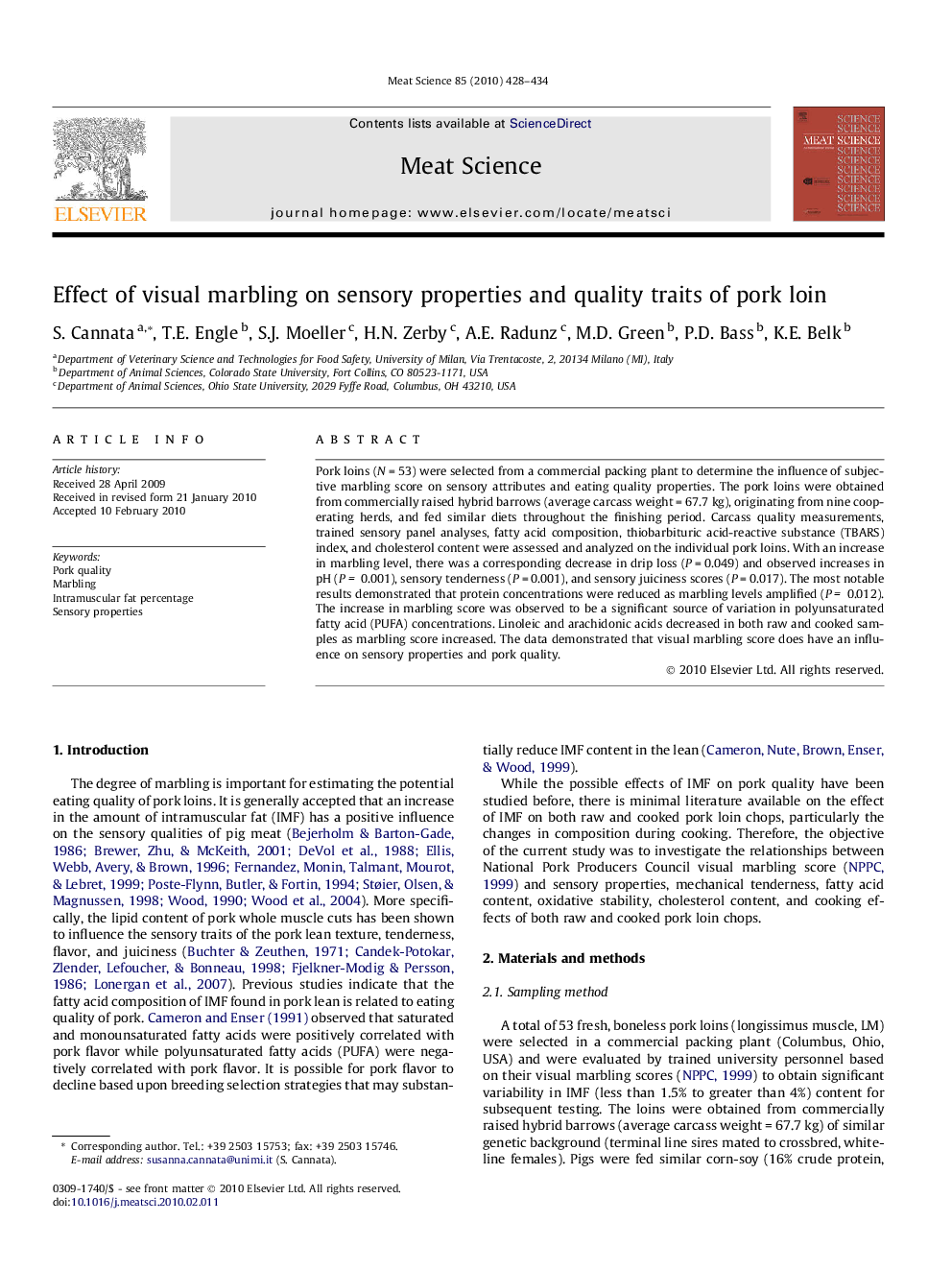| Article ID | Journal | Published Year | Pages | File Type |
|---|---|---|---|---|
| 2450557 | Meat Science | 2010 | 7 Pages |
Pork loins (N = 53) were selected from a commercial packing plant to determine the influence of subjective marbling score on sensory attributes and eating quality properties. The pork loins were obtained from commercially raised hybrid barrows (average carcass weight = 67.7 kg), originating from nine cooperating herds, and fed similar diets throughout the finishing period. Carcass quality measurements, trained sensory panel analyses, fatty acid composition, thiobarbituric acid-reactive substance (TBARS) index, and cholesterol content were assessed and analyzed on the individual pork loins. With an increase in marbling level, there was a corresponding decrease in drip loss (P = 0.049) and observed increases in pH (P = 0.001), sensory tenderness (P = 0.001), and sensory juiciness scores (P = 0.017). The most notable results demonstrated that protein concentrations were reduced as marbling levels amplified (P = 0.012). The increase in marbling score was observed to be a significant source of variation in polyunsaturated fatty acid (PUFA) concentrations. Linoleic and arachidonic acids decreased in both raw and cooked samples as marbling score increased. The data demonstrated that visual marbling score does have an influence on sensory properties and pork quality.
